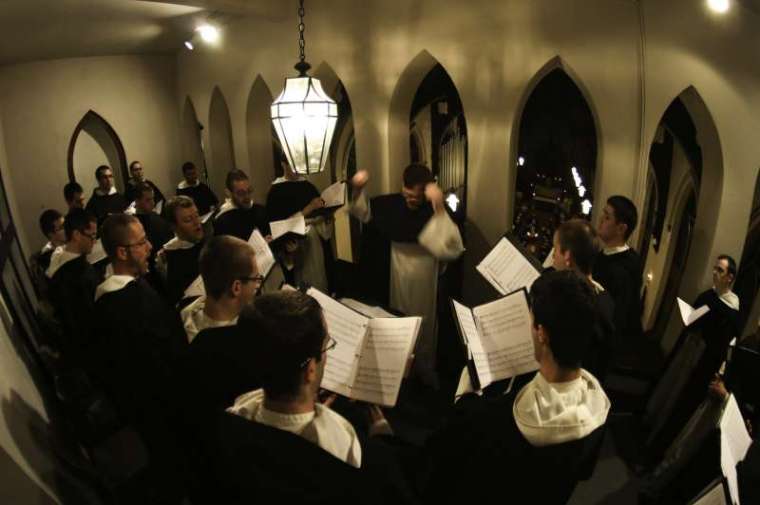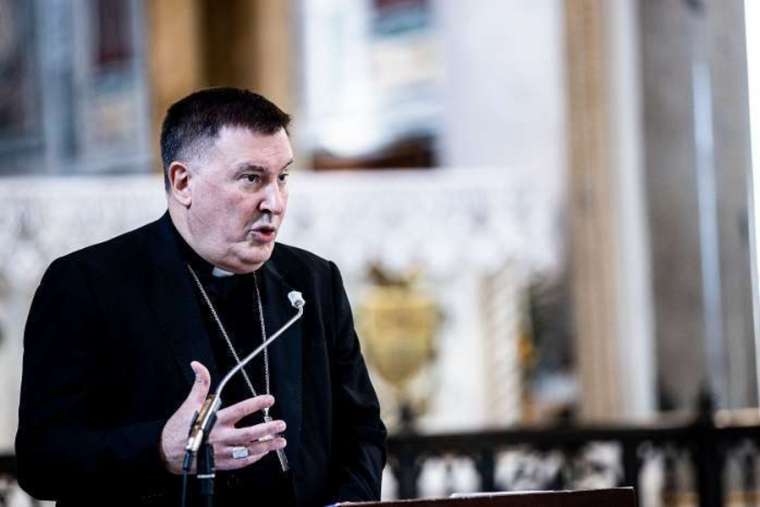The doctrine committee of the U.S. bishops’ conference (USCCB) earlier in 2020 produced a guide to evaluating the lyrics of hymns on the basis of their doctrinal content, noting that Vatican II declared sacred music’s purpose to be “the glory of God and the sanctification of the faithful.”
The document was distributed to bishops in December 2020; they were encouraged by the USCCB to share it with diocesan worship offices, pastors, and parish musicians.
The U.S. bishops’ doctrine committee provided two general guidelines for determining whether a hymn is doctrinally suitable for liturgical use: whether it conforms to Catholic doctrine, and whether its images and vocabulary appropriately reflect the usage of Scripture and the liturgical prayer of the Church.
While hymns needn’t “be composed of doctrinal formulae…, [i]t is important to avoid language that could be easily misconstrued in a way that is contrary to Catholic doctrine,” the bishops explained.
Hymnody’s beauty “is constitutively related to the truth of the mystery of faith it proposes for our wonder and praise,” the document’s preface notes.
It adds that since beauty and truth are convertible, “there can be no competition, much less contradiction, between the two. The truth of the faith need not be—and indeed must not be —compromised or subordinated to the canons of compositional style or the needs of musical or poetic form. At the same time, the beauty of the faith cannot be neglected—indeed it must be reverenced and highlighted—in the desire to communicate effectively the truth of what has been revealed.”
Hymn-writers are bound to honor and communicate “the mystery of faith in word and music, and this requires genuine artistry, industry, and fidelity,” the bishops wrote. They added that “while there are a number of factors that affect the suitability of hymns for use in Catholic liturgy, such as singability, beauty of language, poetry, etc., in this resource we are concerned with their doctrinal content.”
Scripture provides “the normative idiom for the expression of the mystery,” the bishops said. “The sacred texts, and the liturgical sources which draw on the living Word, provide something of a ‘norm’ for expression when communicating the mystery of faith in liturgical poetics, or hymnody.”
The bishops emphasized both the Catechism of the Catholic Church and Vatican II in their own writing.
Sacrosanctum Concilium, the Second Vatican Council’s 1963 constitution on the sacred liturgy, noted, “The texts intended to be sung must always be in conformity with Catholic doctrine; indeed they should be drawn chiefly from holy scripture and from liturgical sources.”
The bishops’ document refers to, and includes as an appendix, the 1997 report of then-Archbishop of Indianapolis Daniel Buechlein on 10 common deficiencies in catechetical materials.
“Since contemporary hymnody and contemporary catechetical texts evolved, to some extent, together, it can be useful to use this list of ten imprecisions to alert a bishop, pastor, or liturgical music minister to deficiencies they may find in hymns, or in a collection of hymns as a whole,” the doctrine committee advised.
They urged that those involved in hymnody “be especially attentive” to six categories of potential deficiencies: in the presentation of Eucharistic doctrine; of Trinitarian doctrine; in the doctrine of God and his relation to humans; a view of the Church that sees her as essentially a human construction; doctrinally incorrect views of the Jewish people; and incorrect Christian anthropology.
Regarding Eucharistic doctrine, the bishops warned that “Catholics nurtured on a steady diet of certain hymns will learn from them that at Mass we come together to share bread and wine, which remain bread and wine, a common meal, even if under special circumstances…. A steady diet of these hymns would erode Catholic sensibility regarding the fullness of Eucharistic teaching, on the Mass as sacrifice, and eventually on the Church, as formed by that sacrifice.”
Examples of hymns that offend the presentation of Eucharistic doctrine, they said, include “God is Here! As We His People”; “Now in This Banquet”; “Let Us Break Bread Together on Our Knees”; and “All Are Welcome.”
Hymns with poor presentation of Trinitarian doctrine include “The Play of the Godhead” and “Led by the Spirit,” while the bishops said that “God Beyond All Names” is a hymn that “fails to respect God’s transcendence.”
Those that erroneously see the Church as a human construct include “Sing a New Church” and “As a Fire is Meant for Burning.”
The bishops wrote that hymns “that imply that the Jews as a people are collectively responsible for the death of Christ” would be ruled out, naming in particular “The Lord of the Dance” and “O Crucified Messiah.”
The document on hymns said that “Canticle of the Sun” “teaches that death is natural and necessary for our life to have something at stake and thus be ‘real.’ In fact, it is the Resurrection of Christ that makes our life ‘real,’ restoring what we had lost in Adam, and it is the Passion of Christ, not death per se, that ‘helps us to feel.’ Death is not a necessary part of human nature.”
The advisory on the use of hymns comes as the USCCB has been approving new translations of components of the Liturgy of the Hours.


